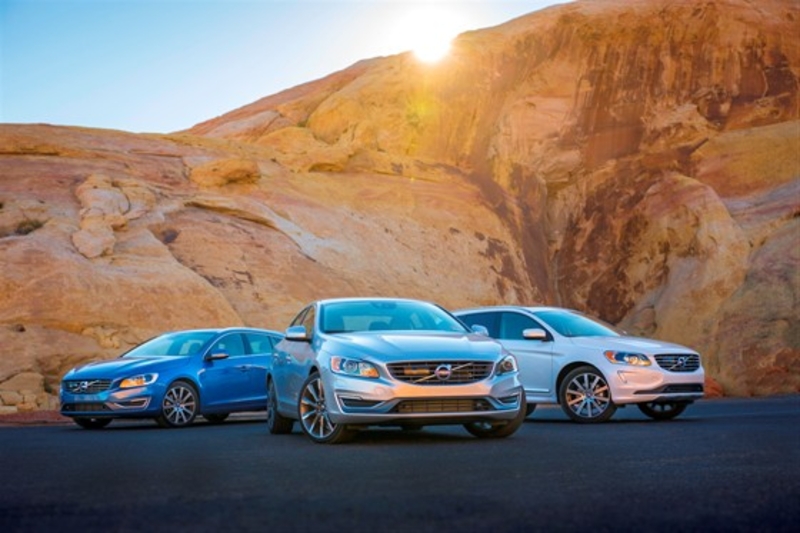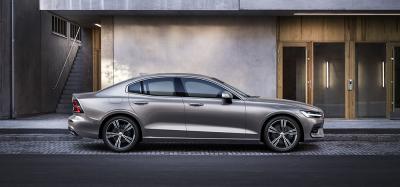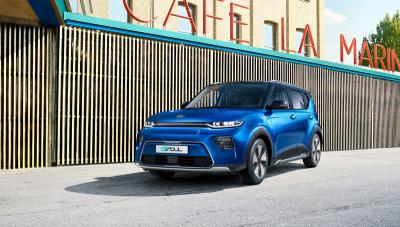When thoughts turns to a Scandinavian car, sedan or wagon, suitable for the family, we cannot help thinking about one brand: Volvo. And the fact that this brand has now been orbiting for a couple of years around Geely - one of the largest private Chinese car producers, known in Europe also for the acquisition of the English factory that produces the famous "Black Cab" (London taxis ) - does not seem to have affected, either in substance or in appearance, that feeling of reliability and safety that has always accompanied the Swedish brand.
This is so also when referring to the renewed mid-sized range of Volvo, both in the S60 sedan, or V60 family version (in addition to the XC60 crossover), emphasizing the concept of a cozy, functional and technologically advanced car. Just as history has taught us to recognize Volvo vehicles, especially from the 240 Wagon, a true icon of the 80s, onwards.
The re-launch of the brand cannot therefore overlook the importance of this model’s success as a valid alternative to the "same old" German cars, quite rightly classified as one of the premium-class cars, although in previous versions has not received the success that the management of the Gothenburg company (not to mention those of Hangzhou) would have liked.
SWEDISH WITH A CHINESE ACCENT
First appeared in 2000, following the renewal of the full range after the acquisition of the brand by Ford (owner of Volvo for 10 years until the takeover by Geely), the recent 2015 model of both the S60 and V60 is a complete restyling of the second series, dating back to 2010, which has been updated on a number of aesthetic and technical elements. First, the engine, with the debut of the new Drive-E units, already prepared to become hybrid through electrical units, to which a large number of electronic aids to driving and on board comfort must be added.
Share ownership here has little to do with trade policies, and even less with technological ones. Volvo remains a reputable brand immediately recognizable in the northern European scenario, and technological innovations developed by the Swedish research center do not disappoint the expectations of the customers. The new S60 and V60 enjoying a deep technological upgrading, with a set of devices we are accustomed to seeing on far more distinguished sedans.
Sober and clean in its design immune to forced stylistic experiments, the S60 and V60 are characterized by a radiator grill incorporated into the design of the front section, free from showy chrome and heavy frames, except for the diagonal band that sustains the unmistakable logo of the company. Further features are the elongated light clusters, complemented by low fog lights and DRL lights for daytime lighting, giving the car as a whole an alluring appeal, with an even more aggressive variation for the R-Design set-up. The rounded wedge shape extends along the whole side, even in the wagon version, seamlessly joining with a rear section dominated by shaped headlights that surmount the twin exhaust giving the car a sporty look.
A very personal design to be found also in the car’s interior. The S60 stresses the concept of maximum comfort and functionality, with extremely ergonomic seats able to counter every phenomenon of fatigue, even in the most sporty version thanks to the seats’ generous lateral support.
The simplicity of the dashboard does not waive elements that show the northern origin of the car, such as a heated steering wheel equipped with repeaters of the main on-board controls (gears included), devoting the central area of the dashboard to housing the Adaptive Digital Display, a TFT multi-function display from which all information, from navigation to infotainment, can be accessed, including the Sensus Connect through which it’s possible to make a phone-call and share with the car the contents of a smartphone.
Technological equipment, really complete here, includes advanced driving support systems, such as a Pedestrian & Cyclist Detection system which automatically activates the brakes before a sudden obstacle, and along with the City Safety system, active up to 50 km / h, intervene to avoid any possible impact on anyone or anything ahead. The Lane Keeping Aid acts on the electrically assisted steering, automatically bringing the car back in the lane while driving on motorways, while once arrived at destination the Park Assist Pilot transforms parking in real child’s play.
Both 4.63 m long., the loading capacity of the rear compartment on the S60 sedan is rather sacrificed compared to the spacious V60 wagon, especially if the spare wheel option is preferred to the tire repair kit.
PROJECTED INTO THE FUTURE
Equipped with four-wheel independent strut suspensions firmly set on the ground, the Volvo platform provides four different settings, including the Four-C active system of immediate variation response of the dampers, and a lower sport profile to emphasize the dynamic qualities of the engine. It is precisely on the engine that the market is focusing its attention: Volvo offers three new two-liter four-cylinder engine, petrol and diesel, operated by a new eight-speed automatic transmission or a more traditional six-speed manual gearbox, which combines brilliant performance with a considerable reduction in fuel consumption and emissions. A combination made possible by advanced technical solutions, the result of a long work of research at the center for research and development of the Swedish company, that produces its vehicles in its specially dedicated plant in Skövde.
The T6 turbo engine with 306 horsepower is the top performer, the newest Volvo expression in terms of energy and performance, obtained by coupling a mechanical supercharger, which works already at low revs, to a turbocharger, with direct fuel injection and variable valve timing. Less exuberant but equally refined, the second petrol units of the Drive-E family, marked T5, waiving the double turbo-charging for a single twin-turbo, that guarantees – considering the 245 hp maximum power output - average fuel consumption in the order of the 17 km / liter with CO2 emissions of 137 g / km. For the moment and at least for a while still the company maintains its previous four-cylinder 1.6-liter engine, offered in two versions, the 180hp T4 and the 150hp T3. As for petrol engines, the diesel offer is very articulated, with the D5 five-cylinder 2.4-liter acting as the benchmark. The 215 hp with 400 Nm of torque, obtained by direct injection and turbo-charging, power both a two-wheel and four-wheel drive layout with an electronically controlled viscous coupling unit.
This unit can also be coupled to a 68 hp / 200 Nm electric motor, located on the rear axle, plug-in type to recharge from your home network, selectable in Pure mode for electric driving with a range of 50 km., Hybrid, able through its dual propulsion to achieve very low emission levels and fuel consumption (respectively 48 g / km of CO2 with more than 55.5 km / liter mileage), and Power, squeezing the maximum power from both, with a total of 319 hp the V60 accelerates from 0 to 100 km / h in just 6.1 seconds. In this case, the AWD is obtained not through a mechanical transmission, benefiting from the dual propulsion present on both axles.
The Drive-E range is here represented by the new turbodiesel D4, that by means of the innovative technology I-Art allows the continuous monitoring and adjustment of the injection pressure in each of the four cylinders, for each combustion cycle. That means a considerable saving in fuel consumption, on average 24.4 km / liter with the eight-speed automatic transmission and only 27 km / liter (with 97 g / km of CO2) with the manual transmission. Still available the already well known D3 engine range, five cylinders 2 liters for 136 hp power, and D2, four-cylinder engine of 1.6 liters, capable of delivering 115 hp.
Across the range 10 different all aluminum alloy wheels are offered, five to ten spokes, with silver or black finish, for 16 and 19 inches keying, equipped with tires ranging from 205/60 R16 to 235/40 R19.
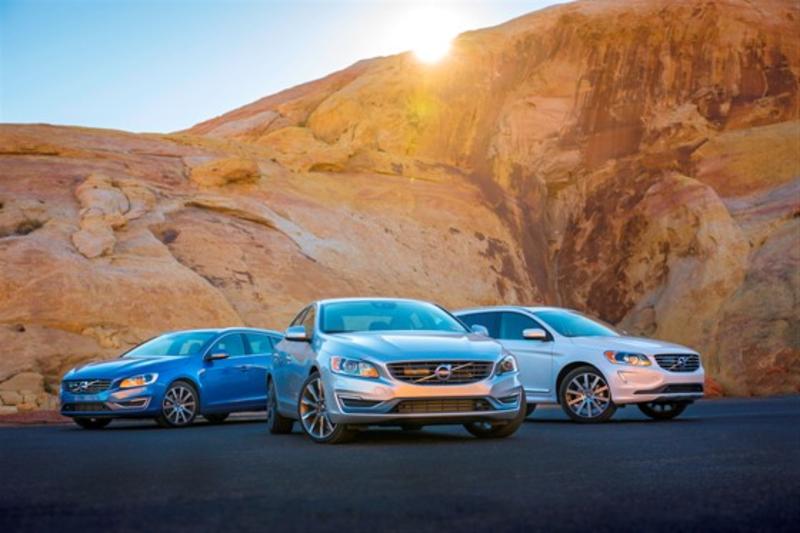
On the mid-sized Volvo platform, which also benefits from a permanent all-wheel drive, the three versions of the 60 series also include, in addition to the S60 sedan and V60 wagon, the inevitable crossover XC60
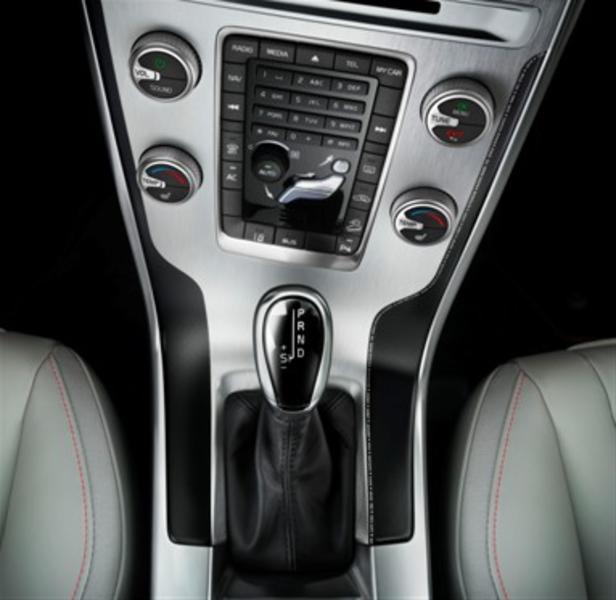
The typically Scandinavian design of the body is also reflected in the interiors, dominated by comfortable and heated seats and a clean and rational dashboard, leading to all on-board functions
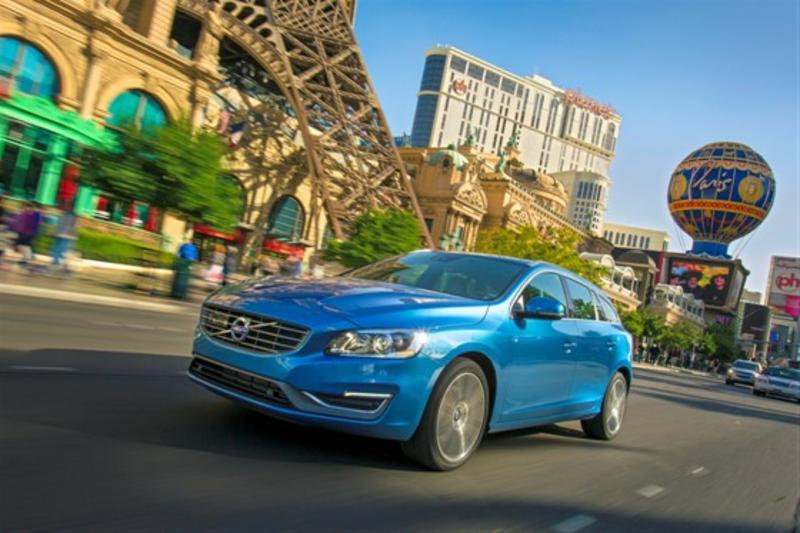
The wide range of features available includes, upon request, an aggressive-looking R-Design front end, a lowered chassis and a wide choice of alloy wheels from 16 to 19 inches

The recent restyling introduced on the 2015 Volvo range has upgraded a previous model dating back to 2010, followed by a deep technical update thanks to the new Drive-E engine family
